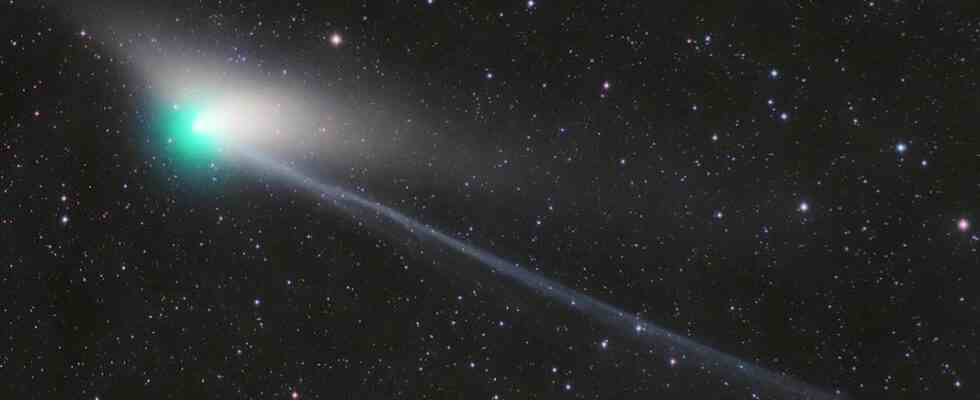Status: 01/30/2023 5:55 p.m
The Neanderthals were still alive when it was last seen 50,000 years ago. Comet C/2022 E3 is now approaching Earth again. Its greenish glow can be seen with the naked eye under favorable conditions.
In the next few days, the comet can be seen best, because astronomically it is currently coming very close to Earth, namely up to a distance of “only” about 42 million kilometers. On February 1st it reaches its closest point to the earth. With a bit of luck, it can even be observed with the naked eye – a really rare opportunity, because C/2022 E3 (ZTF) only comes by Earth every 50,000 years.
When is Comet C/2022 E3 best seen?
Dark, rural areas are favorable for observation – like here in the star park in the Nossentiner Heide.
If you want to see the greenish glowing comet, you should turn north-north-east on a clear night. There the comet moves upwards from the horizon towards the Little Dipper. “It has to be dark. Then the comet can be seen with binoculars and with the naked eye,” says Dirk Steinhauer from the Greifswald observatory. The best viewing time is probably the night of January 31 to February 1, at 4 a.m. after the moon has set – provided the sky is clear. But the comet can also be observed on the nights before and after this time from about 10 p.m. – best with a telescope.
Comet clearly visible again on February 10th and 11th
After February 1st, C/2022’s visibility will decrease again as the waxing moon outshines it. During this time, the comet flies past Earth and on towards Mars. Around February 10th and 11th it will pass Mars and with a bit of luck it will be seen again.
Why is Comet C/2022 E3 green?
According to the German Aerospace Center, the green coloring is caused by an interaction between a gas and the heat of the sun when the comet approaches it. Only the sun’s heat causes the comet to glow – without this glow we would not be able to recognize it in the darkness of space.
How did the comet get its name?
There is a reason for the somewhat prosaic name of the comet: the C stands for the fact that the comet has an orbital period of more than 200 years. The combination 2022 E indicates that the comet was discovered in 2022, in the first half of March (E) and as the third comet (3) in this period. The suffix ZTF refers to the “Zwicky Transient Facility (ZTF)” program of an observatory in California that discovered the comet.
Although its existence has only been known for a year, C/2022, like all comets, is already several billion years old. It comes from the early days of our solar system, and its orbit takes it to the edges.
Observe comet: Good locations in the north
The comet can be observed particularly well in rural regions where there are few light sources. Mountains and hills also offer advantages: the higher observers position themselves, the larger the section of sky. The following northern German towns and regions offer good conditions for comet observation:
- Elbtalaue (Lower Saxony, Schleswig-Holstein, Mecklenburg-West Pomerania)
- Heath with Wilseder Berg (Lower Saxony)
- High altitudes in the Harz Mountains (Lower Saxony)
- Westerhever (Schleswig-Holstein)
- Western part of the island of Fehmarn (Schleswig-Holstein)
- Pellworm Island (Schleswig-Holstein)
- Klützer Winkel and surroundings (Mecklenburg-West Pomerania)
- Mecklenburg Lake District (Mecklenburg-West Pomerania)
Further information




